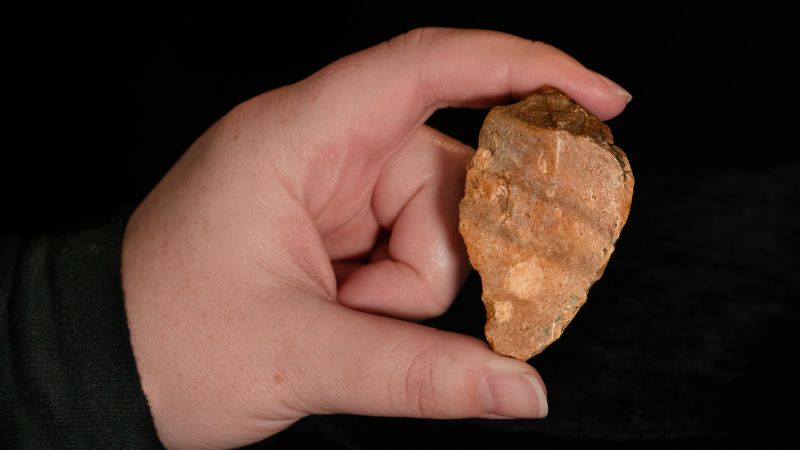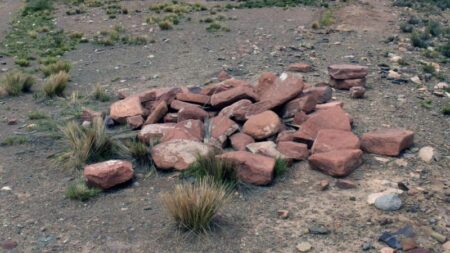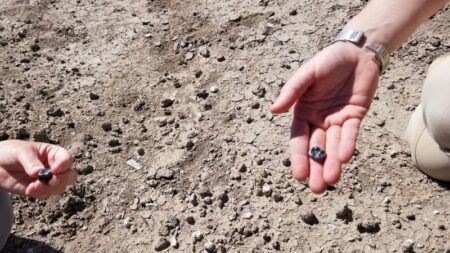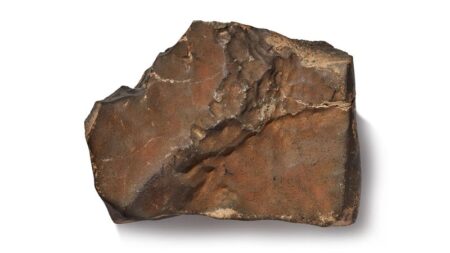Recent archaeological discoveries on the Indonesian island of Sulawesi have unveiled primitive sharp-edged stone tools that contribute significantly to the understanding of ancient human evolution in the Wallacea region. This area, which comprises a series of islands between Asia and Australia, is critical for researchers studying human migration and habitation patterns, particularly in how ancient hominins ventured across oceanic barriers.
Sulawesi is known for its size and ecological diversity, making it a significant location for evolutionary studies. Prior research indicated that a small-bodied human species, Homo floresiensis, referred to colloquially as “hobbits,” inhabited the nearby island of Flores for approximately 700,000 years until around 50,000 years ago. This connection hints at a complex web of human migration that defies earlier models of linear movement along mainland routes.
The flaked stone tools recently discovered on Sulawesi are particularly notable because they date back 1.04 to 1.48 million years, rendering them the oldest evidence of human presence on the island. These tools suggest that ancient hominins may have lived on Sulawesi contemporaneously with, or even earlier than, their counterparts on Flores. A detailed study released in the journal *Nature* discusses these findings and their implications for understanding early human behavior and habitation strategies.
Despite the significance of these findings, researchers are faced with critical questions about how and when these early hominins arrived on the islands, especially considering the need for ocean crossings. The possibility that populations on Sulawesi and Flores were interconnected suggests that Sulawesi may have served as a crucial stepping stone for the hobbits from Flores. Previous discoveries of stone tools on Flores, dated to about 1.02 million years ago, further provide context and support for this theory.
Dr. Adam Brumm, the co-leader of the recent study and an expert in archaeology from Griffith University, highlighted that this discovery strengthens the narrative that the lineage of Homo floresiensis may trace back to Sulawesi. This ancient tool technology on the island bolsters the hypothesis that these diminutive hominins may have originated from an early Asian variant of Homo erectus, which existed in the region over a million years ago.
The excavation, which commenced in 2019, was led by Dr. Budianto Hakim, also associated with Indonesia’s National Research and Innovation Agency. The Calio site, located within a modern cornfield near a river, yielded not only stone tools but animal fossils, including a jawbone of the extinct Celebochoerus, a large-tusked pig species. Such findings suggest a rich environment where these ancient hominins might have crafted tools and hunted.
By 2022, the research team excavated seven distinct stone tools, establishing their age through methods involving the dating of sandstone and animal fossils. These tools appear to be rudimentary yet reflect a certain level of skill in their craftsmanship, indicating an understanding of controlled flaking rather than haphazard stone bashing.
The identity of the tool-makers, however, remains an enigma. While no hominin fossils have been discovered at Calio, the evidence points to tool-making activity indicative of an early human presence. The local climate, which accelerates the degradation of ancient DNA, presents challenges in retrieving biological samples that may help elucidate the identities of these enigmatic hominins.
The researchers speculate that the most likely candidates for the makers of these tools could include Homo erectus or a similar, previously unknown group of hominins that might have utilized overwater dispersals to reach the islands through accidental means, akin to modern-day rodents or monkeys that are thought to navigate to islands while floating on vegetation mats.
Further investigations into ancient human migration routes are hampered by the fragmented nature of the region’s islands, many of which remain unexplored. This complexity raises hypotheses about the social dynamics of ancient hominins and their ability to survive and adapt to isolated ecological niches.
While past research has found evidence of early human life on various islands, including Luzon in the Philippines, the mechanisms enabling these migrations—particularly in terms of transportation—remain speculative. John Shea, a professor of anthropology, points out that while clear evidence exists for the use of watercraft by Homo sapiens, it is uncertain if earlier hominins possessed the proficiency for such activities. The difficulties inherent in navigating the treacherous waters surrounding these islands raise additional questions about how ancient humans truly traversed such spaces.
Brumm and his team are dedicated to continuing their work at Calio and expanding their exploration of Sulawesi to uncover more about these ancient inhabitants. They aim to find fossils that could illuminate the evolutionary trajectory of Homo erectus and provide insights into why certain groups may have thrived while others went extinct.
As new discoveries are made, particularly in ecological zones like Sulawesi—a unique environment possibly characterized by varied habitats and potential for evolutionary divergence—the story of our ancient relatives becomes more complex and intriguing. Each find adds depth to the












